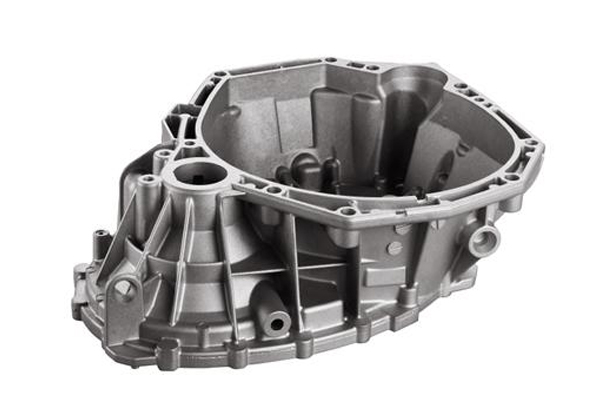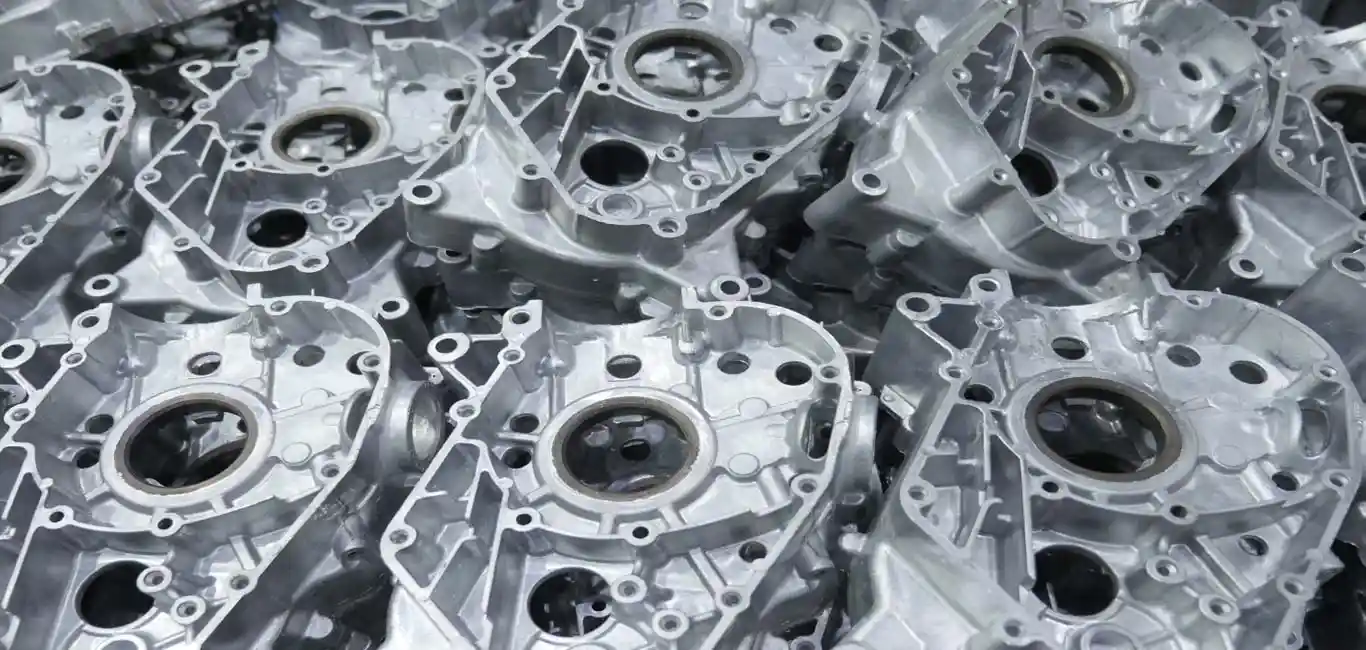The future of Aluminum Casting technology and innovation
Every little thing You Need to Know Concerning the Uses and Benefits of Aluminum Castings
Aluminum castings play an important duty throughout various industries, offering special homes that boost item performance. Their lightweight nature and stamina make them suitable for applications in vehicle and aerospace sectors. Additionally, the adaptability of casting techniques permits complex designs and tight tolerances. As the need for sustainable options rises, understanding the advantages and applications of aluminum castings comes to be progressively essential. What details advantages do they provide over various other products?
Overview of Aluminum Casting Processes
Aluminum casting processes encompass a selection of methods used to form molten aluminum right into preferred kinds. These techniques include sand spreading, pass away casting, and financial investment casting, each offering distinct advantages relying on the application (Aluminum Casting). Sand casting involves developing a mold and mildew from sand, permitting intricate layouts and large parts, while die casting uses high pressure to infuse liquified aluminum right into metal molds, making certain accuracy and smooth surfaces. Investment casting, likewise recognized as lost-wax spreading, generates complex shapes with superb dimensional precision, making it suitable for in-depth components
These procedures are defined by their capacity to produce lightweight, sturdy parts that display superb corrosion resistance. The versatility of aluminum permits for customization in different sectors, from vehicle to aerospace. In addition, the ability to recycle aluminum improves the sustainability of these casting procedures, minimizing ecological influence while maintaining material stability. Recognizing these techniques is crucial for optimizing production performance and attaining top quality aluminum castings.
Key Applications of Aluminum Castings
Aluminum castings play an essential function throughout different sectors, specifically in auto, aerospace, and consumer electronics. In the automobile industry, they add to light-weight frameworks that boost gas effectiveness. Aerospace parts profit from aluminum's strength-to-weight proportion, while customer electronics leverage its flexibility for reliable manufacturing.
Automotive Market Applications
As the vehicle industry continues to evolve, manufacturers significantly depend on aluminum castings for their lightweight yet sturdy residential properties. These castings play a crucial function in improving car performance, gas efficiency, and overall safety. Trick applications include engine blocks, transmission real estates, and architectural elements, which benefit from aluminum's excellent strength-to-weight proportion. Furthermore, aluminum castings facilitate intricate geometries, enabling for innovative layouts that improve aerodynamics and lower drag. The corrosion resistance of aluminum additionally adds to long life, lowering maintenance prices for both producers and consumers. As electrical automobiles gain popularity, aluminum castings are necessary for battery units and other components, additionally solidifying their significance in the future of auto manufacturing.
Aerospace Element Production
In the aerospace sector, aluminum castings are indispensable to the manufacturing of light-weight, high-performance elements. These castings are essential for making components such as engine housings, architectural structures, and touchdown equipment parts, where weight decrease is essential for fuel performance and overall performance. The superb strength-to-weight ratio of aluminum permits the development of complex geometries that boost aerodynamics. Furthermore, aluminum's resistance to deterioration contributes to the durability and integrity of aerospace parts, making certain safety in flight operations. The spreading procedure also enables for accurate resistances, which is important in meeting strict aerospace market requirements. On the whole, aluminum castings play a critical function beforehand aerospace modern technology while supporting the market's promote lasting methods.
Customer Electronic Devices Manufacturing
The use of aluminum castings in consumer electronics production has ended up being significantly significant due to their light-weight and resilient properties. Makers utilize these castings to develop elements for numerous tools, including smart devices, laptops, and gaming consoles. Aluminum's outstanding thermal conductivity likewise aids in warmth dissipation, boosting gadget performance and long life. The convenience of aluminum enables for complex layouts and complicated geometries, enabling streamlined and contemporary aesthetic appeals that appeal to consumers. In addition, aluminum castings can be conveniently reused, straightening with the expanding need for sustainable manufacturing methods. As technology advancements, the duty of aluminum castings in establishing innovative and reliable customer electronics is anticipated to broaden, making them a staple in the sector.

Benefits of Using Aluminum Castings
While different products are available for spreading, aluminum stands apart as a result of its distinct combination of lightweight homes, toughness, and deterioration resistance. The low density of aluminum makes it an ideal option for applications where weight reduction is important, such as in the automobile and aerospace industries. Its exceptional strength-to-weight proportion allows makers to create durable components without including extreme weight.
Additionally, aluminum castings can be generated with elaborate designs and tight resistances, enabling complicated geometries that are tough to attain with other products. The convenience of aluminum allows for numerous casting techniques, consisting of sand, die, and investment casting, catering to varied manufacturing demands. Aluminum's simplicity of machining and completing improves its charm, promoting the creation of top quality surface finishes. Overall, the advantages of utilizing aluminum castings contribute to enhanced performance and efficiency in various applications throughout various markets.
Rust Resistance in Aluminum Castings

Natural Oxide Layer
An all-natural oxide layer types on the surface of aluminum castings, giving an important barrier versus environmental factors that can cause degeneration. This thin, protective film is an outcome of the aluminum's response with oxygen airborne, effectively protecting the underlying steel from wetness, chemicals, and pollutants. Consequently, aluminum castings display impressive deterioration resistance, which enhances their long life and durability in different applications. The oxide layer is not only helpful for protection however likewise adds to visual high qualities, as it can create a matte surface that many markets locate attractive. Additionally, this all-natural procedure decreases the demand for additional layers, making aluminum castings a cost-effective option for suppliers seeking trustworthy, resilient products.
Alloy Variations Effect
The structure of aluminum alloys greatly affects their deterioration resistance homes in castings. Various alloy variations, such as 1xxx, 2xxx, and 6xxx collection, display distinctive levels of sensitivity to deterioration. As an example, 1xxx alloys, primarily made up of pure aluminum, offer outstanding corrosion resistance because of their high pureness. In comparison, 2xxx alloys, which have copper, might experience substantial deterioration when exposed to harsh atmospheres. Meanwhile, 6xxx alloys, incorporating magnesium and silicon, strike an equilibrium in between strength and resistance. The visibility of alloying components can boost or reduce protective oxide layers, inevitably impacting long life and efficiency. Comprehending these variations is vital for picking the best alloy for particular applications where corrosion resistance is essential.
Design Flexibility and Personalization
Although various products exist for casting applications, aluminum attracts attention because of its impressive style flexibility and capacity for personalization. This convenience enables developers and engineers to create intricate forms and types that fulfill particular practical requirements. Aluminum Casting. The reduced density of aluminum makes it possible for light-weight styles, which is particularly useful in industries such as auto and aerospace, where weight decrease is essential
Aluminum castings can be customized to various requirements, including wall surface density, surface coating, and dimensional tolerances. This versatility not just improves the visual charm yet likewise boosts the efficiency of the end product. Furthermore, progressed techniques such as 3D printing and computer-aided layout (CAD) additional facilitate the personalization process, making it possible for fast prototyping and decreasing preparations. Aluminum castings can effectively fulfill the varied needs of different sectors while offering producers the capacity to innovate and respond swiftly to market needs.
Comparison With Various Other Casting Materials
While different casting materials each have their distinct benefits, aluminum constantly demonstrates remarkable residential or commercial properties that make it a favored selection in numerous applications. Contrasted to iron and steel, aluminum is considerably lighter, which decreases the general weight of ended up items, improving fuel performance in automobile and aerospace markets. Moreover, aluminum offers outstanding rust resistance, needing less maintenance in time compared to materials like iron, which read what he said can rust.
When compared with plastics, aluminum's toughness and resilience surpass many artificial choices, making it appropriate for demanding settings. On top of that, aluminum's thermal and electrical conductivity is remarkably greater than the majority of various other steels, making it perfect for applications requiring efficient warmth dissipation or electrical components.

Future Patterns in Aluminum Casting Technology
Improvements in aluminum casting modern technology are set to redefine its applications throughout various industries. Technologies in automation and robotics are enhancing production processes, boosting effectiveness and precision. The combination of man-made knowledge and device understanding makes it possible for real-time tracking and anticipating maintenance, decreasing downtime and enhancing high quality control.
The growth of innovative alloys is increasing the efficiency abilities of aluminum castings, making them suitable for even more demanding applications, especially in auto and aerospace sectors. Sustainable practices are also acquiring grip, with boosted focus on reusing aluminum and lowering carbon footprints during production.
Additive manufacturing techniques, such as 3D printing, are being checked out to create complicated geometries that standard techniques can not achieve, permitting better style adaptability. These fads suggest a future where aluminum spreading will certainly not just satisfy yet exceed why not check here market expectations, driving advancement and sustainability in production.
Often Asked Concerns
How Are Aluminum Castings Recycled After Use?
Aluminum castings are generally collected, cleansed, and refined in recycling facilities. The material is melted down, fine-tuned, and afterwards changed right into new items, therefore saving resources and reducing ecological effect while preserving aluminum's desirable homes.
What Are the Regular Prices Related To Aluminum Castings?
The common prices connected with aluminum castings vary based on aspects such as complexity, quantity, and material specifications. Typically, prices vary from a few bucks per pound to substantially greater amounts for complex designs and huge quantities.
Just How Do Aluminum Castings Compare in Weight to Steel Castings?
Aluminum castings evaluate significantly much less than steel castings, usually around one-third the weight (Aluminum Casting). This lowered mass permits for much easier handling, transportation, and application in various industries, adding to enhanced effectiveness in design and manufacturing procedures
What Industries Mostly Rely Upon Aluminum Castings?
Different sectors considerably count on aluminum castings, consisting of automobile, aerospace, electronic devices, and customer goods. Their light-weight nature, deterioration resistance, and flexibility make them important for producing parts in these sectors, improving performance and efficiency.
Exist Any Kind Of Health And Wellness Dangers Connected With Aluminum Casting Processes?
Health threats related to aluminum spreading procedures include direct exposure to fumes, dirt, and chemicals, which can bring about respiratory system concerns and skin inflammation. Correct precaution and equipment are necessary to mitigate these potential hazards in the work environment.